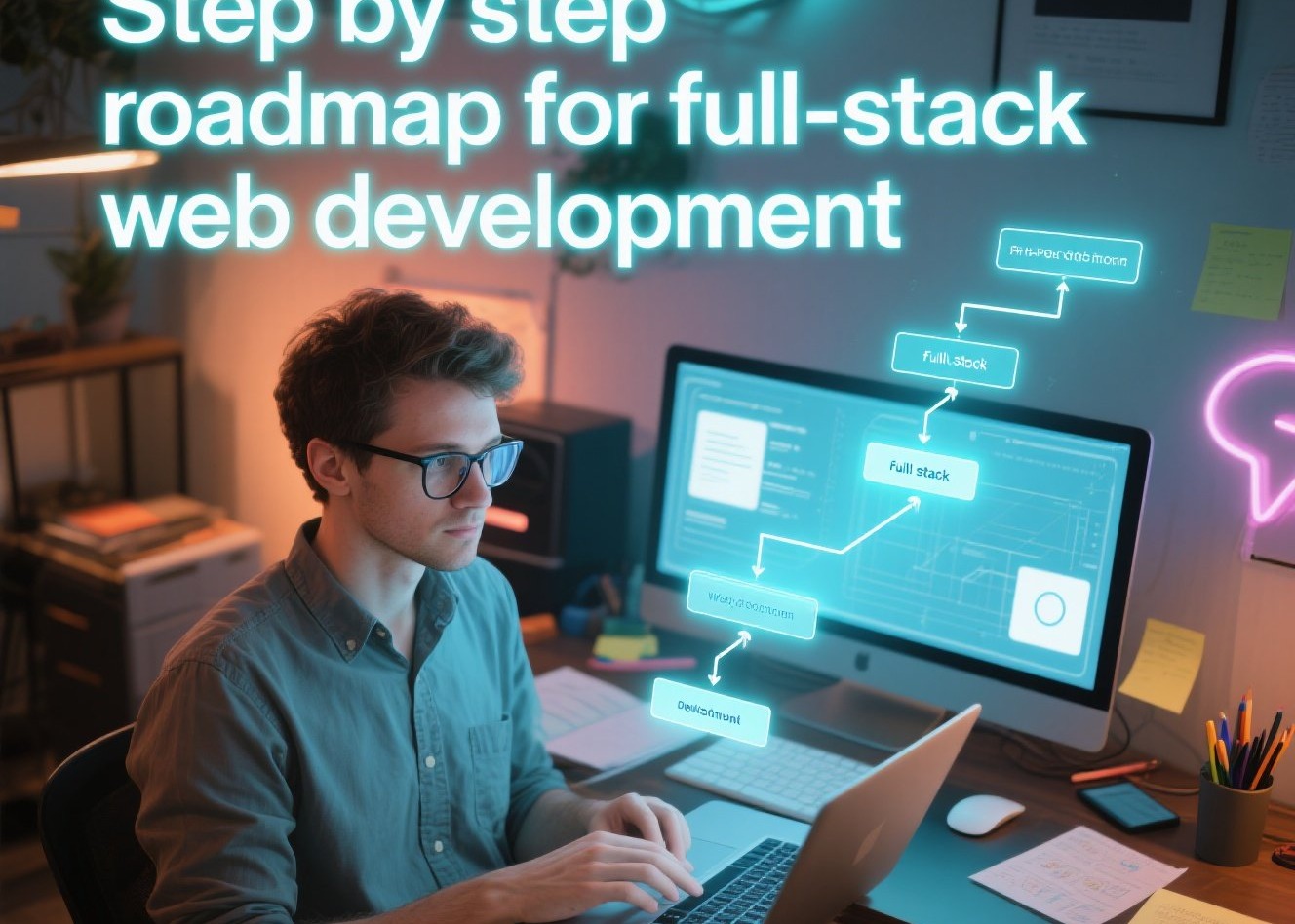
Step-by-Step Roadmap for Full-Stack Web Development in 2025
Full-stack web development is one of the most in-demand career paths today. A full-stack developer can build both the front-end (what users see) and the back-end (server, database, APIs) of a website or app.
If you’re starting from scratch in 2025, you’ll need a clear roadmap to avoid confusion and learn in the right order. This guide will walk you through a step-by-step roadmap to becoming a full-stack web developer.
Step 1: Learn the Basics of Web Development
Before diving into frameworks, you need strong fundamentals.
🔹 HTML – Structure of web pages
🔹 CSS – Styling and layout
🔹 JavaScript – Adding interactivity
👉 Free Resources:
MDN Web Docs (HTML, CSS, JS)
W3Schools Tutorials
freeCodeCamp’s Responsive Web Design
Step 2: Master Front-End Development
After learning the basics, move on to front-end frameworks and tools.
✅ Key Skills:
Modern JavaScript (ES6+)
CSS frameworks (Tailwind, Bootstrap)
Front-end frameworks (React.js, Vue.js, or Angular)
Version control with Git & GitHub
👉 Best Choice in 2025: React.js (most in-demand framework).
Step 3: Learn Back-End Development
The back-end powers the application logic and connects to databases.
✅ Key Skills:
Programming languages: Node.js (JavaScript), Python (Django/Flask), or Java (Spring Boot)
REST APIs & GraphQL
Authentication & Authorization
Server management basics
👉 Recommended in 2025: Node.js with Express.js (JavaScript full-stack consistency).
Step 4: Work with Databases
Every web app needs a way to store and retrieve data.
✅ Databases to Learn:
SQL (PostgreSQL, MySQL) → structured data
NoSQL (MongoDB, Firebase) → flexible, document-based storage
👉 Best Practice: Learn both SQL & NoSQL to handle different project needs.
Step 5: Understand DevOps & Deployment
A full-stack developer should know how to deploy applications so users can access them online.
✅ Key Tools:
Hosting: Netlify, Vercel, Render (for front-end)
Cloud: AWS, Google Cloud, Azure
Docker & container basics
CI/CD pipelines (GitHub Actions, GitLab CI)
👉 Start simple with Vercel or Netlify, then explore cloud platforms.
Step 6: Build Real Projects
Learning is incomplete without building. Start small, then move to complex apps.
💡 Beginner Projects:
To-do list app
Personal portfolio website
Weather app
💡 Intermediate Projects:
Blog with authentication
Chat application
E-commerce website
💡 Advanced Projects:
SaaS dashboard
Social media platform clone
AI-powered web app
Step 7: Learn Advanced Topics
To stand out as a full-stack developer in 2025, explore advanced areas:
TypeScript → safer, scalable code
Next.js → server-side rendering & full-stack features
GraphQL → modern API management
Testing frameworks (Jest, Cypress)
Web security practices (JWT, OAuth, HTTPS, CSRF prevention)
Step 8: Join Developer Communities
Networking and continuous learning are key.
👨💻 Communities to Join:
GitHub → contribute to open-source projects
Stack Overflow → ask & answer coding questions
Reddit → r/webdev, r/learnprogramming
Discord & Slack dev groups
Step 9: Build a Portfolio & Resume
Employers want proof of your skills. Showcase your projects online.
✅ Steps:
Create a personal portfolio website
Upload code to GitHub
Write technical blogs (on Medium or Dev.to)
Contribute to open-source projects
Conclusion
Becoming a full-stack web developer in 2025 requires:
Learning HTML, CSS, and JavaScript basics
Mastering front-end frameworks (React.js, Vue, or Angular)
Learning a back-end language (Node.js, Python, or Java)
Working with databases (SQL & NoSQL)
Understanding deployment & DevOps basics
Building real-world projects
Exploring advanced topics
Networking & showcasing your portfolio
👉 With consistency, you can become job-ready in 6–12 months if you follow this roadmap step by step.
FAQs
Q1: How long does it take to become a full-stack web developer?
It usually takes 6 months to 1 year with consistent practice and project-building.
Q2: Do I need a degree to get a full-stack job?
No. Many companies hire self-taught developers if they have projects and a strong portfolio.
Q3: Which is better for full-stack, Python or JavaScript?
Both are excellent. JavaScript (Node.js + React) is more common for full-stack consistency, while Python (Django/Flask) is popular in data-heavy apps.
Q4: Is full-stack development a good career in 2025?
Yes. Full-stack developers are in high demand and often earn competitive salaries.
